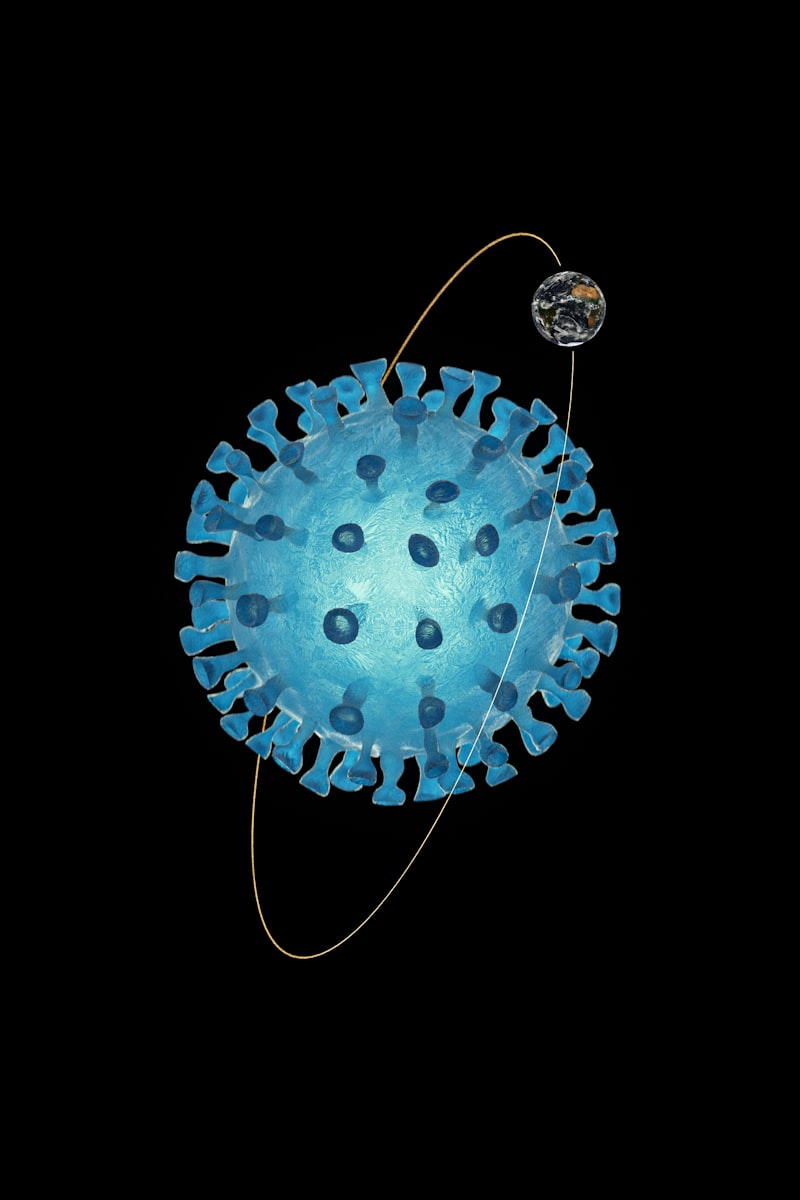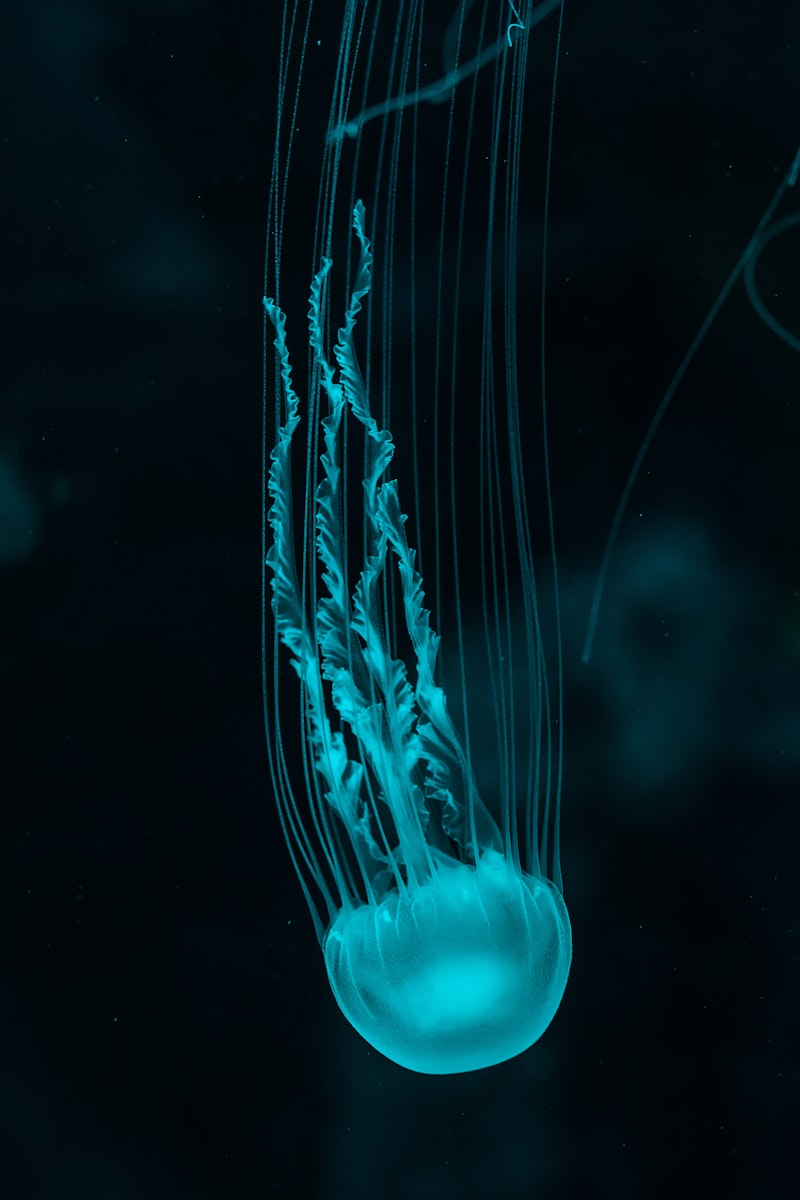Have you ever wondered about the mesmerizing creatures that roam the depths of our oceans, almost like ethereal beings? Enter the fascinating world of jellyfish. These gelatinous marine animals captivate both scientists and casual observers alike with their otherworldly appearance and unique characteristics.
Jellyfish, often referred to as jellies, are not actually fish. They belong to a diverse group of invertebrates known as Cnidaria, which also includes corals and sea anemones. What makes jellyfish particularly intriguing is their simplicity combined with their effectiveness as predators. Despite lacking a brain or a centralized nervous system, they have evolved specialized structures called cnidocytes, which are stinging cells used both for capturing prey and for defense.
One of the most awe-inspiring features of jellyfish is their incredible diversity. They come in a vast array of shapes, sizes, and colors, from the small and transparent to the large and brilliantly hued. Some species pulsate gently, propelling themselves through the water with graceful movements, while others drift lazily with the ocean currents, their delicate tentacles trailing behind them like trailing silk ribbons.
The life cycle of a jellyfish is equally fascinating. They typically begin as tiny larvae that settle on the ocean floor and eventually grow into medusae, the familiar umbrella-shaped form that we recognize. Despite their fragile appearance, jellyfish are remarkably resilient creatures, capable of thriving in a wide range of oceanic environments, from shallow coastal waters to the depths of the open sea.
Encounters with jellyfish can be both enchanting and cautionary. While some species are harmless to humans, others possess venomous tentacles that can deliver painful stings. Understanding these creatures is crucial for both conservation efforts and for ensuring safe interactions with marine environments.
Next time you find yourself at the beach or exploring a marine exhibit, take a moment to marvel at the enigmatic beauty of jellyfish. Their mysterious allure reminds us of the vast wonders that lie beneath the ocean’s surface, waiting to be discovered and appreciated.
Unveiling the Mysteries: How Jellyfish Survive and Thrive in Earth’s Oceans
One of the most fascinating aspects of jellyfish survival is their simplicity and efficiency. Unlike many complex marine organisms, jellyfish have a basic body structure composed of a gelatinous umbrella-shaped bell and trailing tentacles. This simplicity belies their remarkable ability to navigate and capture prey effectively.
Jellyfish are equipped with specialized cells called cnidocytes, housed within their tentacles. These cells contain nematocysts, microscopic harpoon-like structures armed with venom. When a jellyfish comes into contact with prey or a perceived threat, these nematocysts fire rapidly, injecting venom and immobilizing the target. This mechanism not only aids in hunting but also serves as a potent defense against predators.
Surviving in the open ocean requires adaptation to diverse conditions, from varying temperatures to different levels of salinity. Jellyfish are incredibly resilient to changes in their environment, capable of thriving in both shallow coastal waters and the deep sea. Their ability to withstand fluctuations in temperature and oxygen levels makes them adaptable to a wide range of oceanic habitats.
Interestingly, jellyfish exhibit a unique lifecycle characterized by a polyp stage, where they attach themselves to substrates such as rocks or coral. During this stage, they reproduce asexually, forming colonies of genetically identical polyps. This adaptability in reproduction allows jellyfish populations to rapidly respond to favorable environmental conditions, contributing to their resilience in marine ecosystems.

In essence, the survival strategies of jellyfish unveil a remarkable tale of adaptation and resilience in Earth’s oceans. From their efficient hunting mechanisms to their ability to thrive in varying conditions, these creatures continue to fascinate scientists and enthusiasts alike with their enigmatic presence in the depths of the seas.
Glowing Guardians of the Deep: The Bioluminescence Phenomenon in Jellyfish
Jellyfish, those graceful creatures of the sea, are not just beautiful in daylight; they possess a secret nighttime allure. This phenomenon, known as bioluminescence, is what sets them aglow in the darkness of the deep ocean. Imagine being surrounded by tiny living lanterns, each flicker a testament to the wonders of adaptation and evolution.
Bioluminescence in jellyfish is a fascinating natural light show powered by chemistry. Deep within their bodies, special cells called photophores produce light through a chemical reaction involving luciferin and luciferase. This light serves various purposes, from attracting prey to confusing predators and even communicating with other jellyfish.
The mechanics behind this phenomenon are as intricate as they are beautiful. When these jellyfish are disturbed, whether by the gentle current of the ocean or a passing creature, they emit a soft, ethereal glow. It’s like witnessing stars being born right before your eyes, a celestial ballet hidden beneath the waves.
Scientists believe that bioluminescence in jellyfish evolved over millions of years, perfecting itself as a survival strategy. By lighting up the dark waters, jellyfish can startle predators, giving them a chance to escape. Some species also use their bioluminescence to lure prey closer, making hunting in the vast ocean depths a little easier.
Next time you find yourself at the ocean’s edge or diving into its depths, take a moment to appreciate these glowing guardians of the deep. Their bioluminescence isn’t just a spectacle—it’s a reminder of the incredible diversity and adaptability of life on Earth. So, keep your eyes peeled and marvel at the radiant beauty that jellyfish bring to the mysterious world beneath the waves.
From Stings to Science: How Jellyfish Venom Could Revolutionize Medicine
One of the most promising aspects of jellyfish venom lies in its complex composition. Researchers have identified a myriad of bioactive compounds within this venom, each with unique properties that could be harnessed for medical treatments. These compounds range from peptides that can block pain receptors to proteins that inhibit blood clotting. Such diversity offers a treasure trove of possibilities for developing new drugs.
But how exactly can jellyfish venom be applied in medicine? Imagine using venom-derived peptides to create a powerful painkiller without the addictive properties of traditional opioids. Researchers are exploring this possibility, aiming to alleviate chronic pain safely and effectively. Moreover, the ability of certain venom proteins to prevent blood from clotting excessively could lead to innovative treatments for cardiovascular diseases, potentially saving millions of lives worldwide.
Beyond pain management and cardiovascular health, jellyfish venom shows promise in combating cancer. Some venom components have demonstrated the ability to selectively target and destroy cancer cells while leaving healthy cells unharmed—a potential game-changer in oncology treatments.
The journey from jellyfish sting to scientific marvel highlights the transformative power of nature’s most unexpected sources. As researchers delve deeper into the mysteries of jellyfish venom, they uncover not just a venomous adversary of the seas but a potential ally in the fight against some of humanity’s most challenging medical conditions.
Invisible Architects: The Role of Jellyfish in Marine Ecosystems
One of the remarkable aspects of jellyfish is their role as predators. Despite their ethereal appearance, they are efficient hunters, preying on small fish, plankton, and even other jellyfish. This predatory behavior regulates the population of their prey, preventing any single species from dominating and upsetting the ecosystem’s equilibrium.
Moreover, jellyfish contribute significantly to nutrient cycling. When they consume prey, they release nutrients back into the water through their waste. These nutrients become essential building blocks for phytoplankton and other marine organisms, kickstarting the food chain that supports countless species, from small fish to whales.
Their presence also influences the physical structure of marine environments. Jellyfish create microhabitats for juvenile fish and other marine organisms. These creatures seek shelter among the tentacles of jellyfish, finding refuge from larger predators and environmental stresses. In this way, jellyfish provide crucial nursery habitats that support biodiversity in coastal and open ocean waters alike.
Despite their beneficial roles, jellyfish blooms—rapid increases in jellyfish populations—can sometimes have negative impacts. Large blooms may disrupt fisheries, clog cooling systems of power plants, and even impact tourism. Understanding the factors that trigger jellyfish blooms is crucial for managing and mitigating their potential negative effects on human activities.
Beyond Tentacles: The Remarkable Diversity of Jellyfish Species
Take, for instance, the moon jellyfish, with its translucent bell and delicate trailing tentacles. Found in oceans worldwide, these gentle drifters pulse rhythmically, using their tentacles to capture plankton and small fish. Despite their otherworldly appearance, moon jellyfish play a crucial role in marine ecosystems, serving as both predator and prey.
In contrast, the lion’s mane jellyfish commands attention with its impressive size and potent sting. Known for its dense, trailing tentacles that can extend over 100 feet, this species inhabits colder northern waters. Its mane-like appearance gives it a regal air, yet beneath its beauty lies a formidable predator capable of stunning its prey with venomous cells.
Moving beyond these well-known examples, the box jellyfish presents a stark contrast in both appearance and behavior. With a cube-shaped bell and tentacles equipped with powerful toxins, the box jellyfish is one of the most venomous creatures in the ocean. Found primarily in tropical and subtropical waters, it navigates with surprising agility, capturing fish and crustaceans with lethal precision.

Delving deeper into the ocean’s depths reveals even more surprises. The bioluminescent jellyfish, such as the crystal jelly, illuminate the dark waters with their glowing displays, using light-producing organs to communicate and evade predators. Their ability to emit light creates a mesmerizing spectacle that underscores their adaptability in the harsh, light-starved depths.
Jellyfish Blooms: Nature’s Spectacular Yet Mysterious Events
These blooms, often referred to as jellyfish outbreaks or swarms, occur when conditions align perfectly in the ocean. Warm waters, abundant nutrients, and optimal salinity levels create a haven for jellyfish to thrive and multiply rapidly. What starts as a small congregation can quickly escalate into a vast gathering, coloring the sea with their translucent bodies.
But why do these blooms happen, and what role do jellyfish play in their ecosystems? Beyond their ethereal appearance, jellyfish serve crucial ecological functions. They are efficient predators, feeding on small fish and plankton, thereby regulating prey populations. Their presence also impacts fisheries and tourism, sometimes leading to complex economic consequences.
Scientists are increasingly studying jellyfish blooms to understand their ecological implications and potential links to climate change. Are these blooms becoming more frequent or intense due to warming oceans? How do they affect marine biodiversity and the food web dynamics? These questions fuel ongoing research worldwide.
Moreover, jellyfish blooms aren’t just a modern curiosity—they have historical precedents dating back centuries. Ancient records and artworks depict these creatures, hinting at their enduring presence and occasional swarming behaviors throughout history.
Jellyfish blooms are a testament to nature’s unpredictability and resilience. They remind us of the interconnectedness of marine life and the delicate balance that sustains our oceans. As we continue to unravel their mysteries, one thing remains certain: encountering a jellyfish bloom is an awe-inspiring experience that underscores the beauty and complexity of our natural world.
Aliens of the Sea: Why Jellyfish Fascinate and Bewilder Researchers
What makes jellyfish such intriguing creatures? It’s not just their mesmerizing appearance, but their incredible adaptability and survival strategies that have puzzled scientists for centuries. From their graceful movements propelled by pulsating bells to their venomous tentacles that stun prey, every aspect of jellyfish biology seems designed for enigma.
Researchers are particularly fascinated by the unique life cycle of jellyfish. Starting as polyps attached to the ocean floor, they transform into free-swimming medusae capable of graceful locomotion. This metamorphosis, akin to a caterpillar becoming a butterfly, showcases nature’s remarkable diversity and adaptation strategies.
But it’s not all beauty and grace with jellyfish. Their ability to thrive in diverse marine environments, from the frigid Arctic waters to the warm tropics, highlights their resilience in the face of environmental challenges. They can survive in oxygen-depleted waters and even outcompete other marine species, making them both a marvel and a potential threat to ecosystems.
Moreover, jellyfish play a crucial role in marine ecosystems, serving as both predator and prey. They contribute to the ocean’s biodiversity and nutrient cycling, yet their population explosions, known as blooms, can disrupt fisheries and tourism.
As researchers delve deeper into the secrets of jellyfish, they uncover new insights into marine biology, neurology, and even medicine. Studying their venom could lead to breakthroughs in pharmaceuticals, while understanding their ecological impact helps us better manage our oceans.
Frequently Asked Questions
Where do jellyfish live and what do they eat?
Discover where jellyfish live and what they eat with our concise FAQ. Explore their habitats from oceans worldwide and learn about their diet consisting mainly of plankton and small fish.
What are jellyfish and how do they live?
Learn about jellyfish and their unique life cycle in this concise FAQ. Discover how these fascinating creatures survive and thrive in marine environments.
How do jellyfish sting and what should I do if stung?
Learn about jellyfish stings and how to respond effectively. Understand the mechanism of jellyfish venom delivery and immediate steps to alleviate pain and prevent further injury.
Why are jellyfish important to marine ecosystems?
Learn why jellyfish are crucial to marine ecosystems, their role in balancing food webs, nutrient cycling, and biodiversity. Discover how their population dynamics impact ocean health and ecosystem stability.
What are the different types of jellyfish and how do they differ?
Learn about the various types of jellyfish and their distinguishing characteristics. Discover how these fascinating creatures differ in size, color, tentacle structure, and habitat preferences. Explore their unique adaptations to different marine environments and understand the importance of identifying jellyfish species for safety and conservation purposes.



